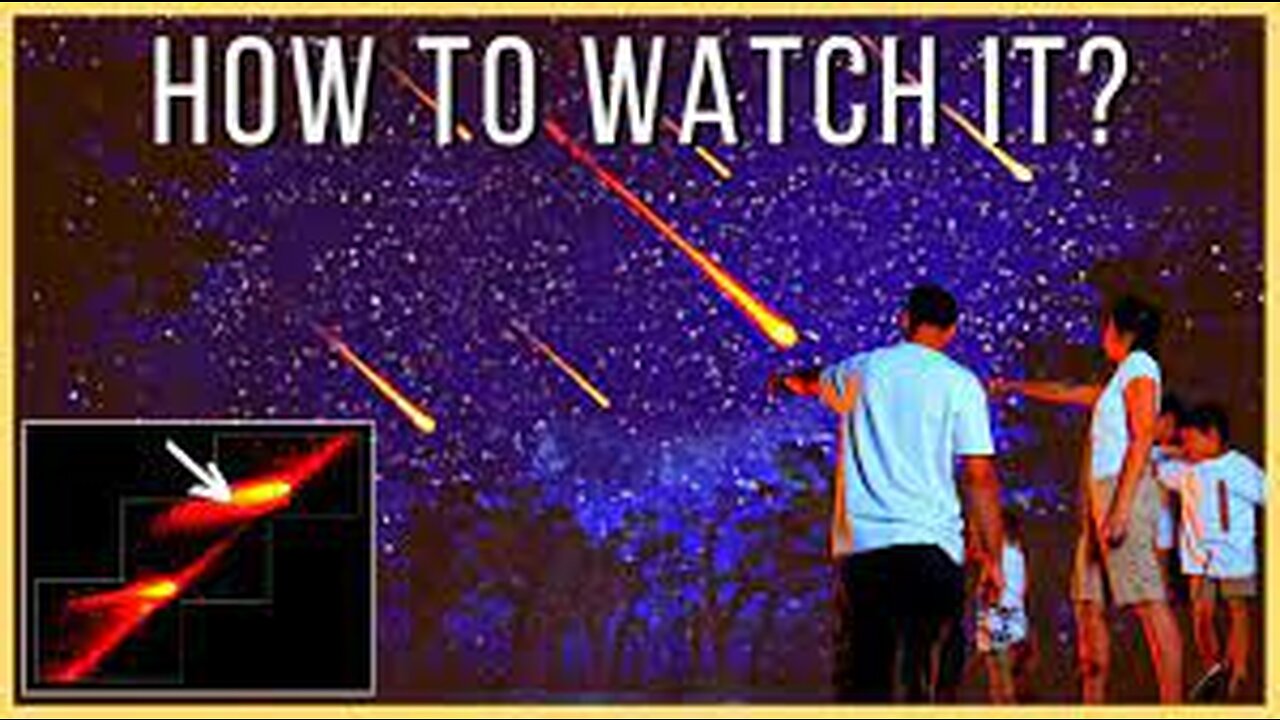Premium Only Content

How to Watch Tau Herculids, a Potential New Meteor Shower
A never-before-seen meteor shower may illuminate the heavens with an uncountable number of bright streaks on Monday night into Tuesday early.
Those are the best predictions meteorologists have for the Tau Herculids, a prospective celestial event that has sky-watching fans excited.
Meteor showers can happen when the Earth plows into debris produced by a comet (or, occasionally, asteroids). The source of the Tau Herculids is Comet 73P/Schwassmann-Wachmann 3, or SW3 for short.
Discovered in 1930, the trifling ice ball originally clocked in at about two-thirds of a mile in diameter, so it rarely produced enough material to generate major nighttime fireworks. But in 1995, SW3 crumbled, producing a large fragment field that our planet is about to encounter.
If the Tau Herculids occur, they will be best visible in the lower 48 United States on Monday, May 30, and early Tuesday, May 31, presumably about 1 a.m. Eastern time. The nicer the view, the further south you dwell. Skywatchers in West Africa, the Caribbean, and South America are also in for a treat. Those living in high latitudes, such as Alaska, are out of luck.
To catch the shower, get away from bright city lights and find the darkest and clearest location you can, one with few hills or other obstacles on the horizon. The moon will be new that night, so its light will not interfere with the display. Allow about half an hour for your eyes to adjust to the darkness.
Unlike meteor showers that are visible for days before and after a peak night, this show will not last long, if it occurs at all.
NASA models are pessimistic, implying that few if any, meteors will be observable. However, Mr Joe Rao, "an associate astronomer at the Hayden Planetarium in New York," cites predictions from credible meteor watchers on the other end of the spectrum who expect to witness 10,000 to 100,000 meteors each hour. If these predictions are correct, the Tau Hercules will be a meteor shower, potentially the LARGEST IN RECORDED HISTORY.
However; Much will depend on the size and the speed of the debris as it hits the atmosphere and how big the comet’s leftover particles are.
If the fragments are on the smaller side, they may produce many slow streaks that are too dim for the human eye to see. Night sky devotees have been burned before when announcing possible wonders like the supposedly once-in-a-lifetime sighting of Comet Kohoutek in 2020 that failed to live up to expectations
-
 LIVE
LIVE
LFA TV
7 hours agoLFA TV CHRISTMAS EVE REPLAY
706 watching -
![ROSEANNE BARR - Her Journey, TRUMP, and the MAGA GOLDEN AGE! [INTERVIEW]](https://1a-1791.com/video/s8/1/M/m/B/2/MmB2v.0kob.1-small-ROSEANNE-BARR-Her-Journey-T.jpg) 51:35
51:35
Dr Steve Turley
1 day ago $8.34 earnedROSEANNE BARR - Her Journey, TRUMP, and the MAGA GOLDEN AGE! [INTERVIEW]
18.2K20 -
 LIVE
LIVE
The Tom Renz Show
1 hour agoMerry Christmas - The Tom Renz Show Christmas
262 watching -
 2:59:10
2:59:10
Wendy Bell Radio
11 hours agoThe Bridge Too Far
107K107 -
 1:03:45
1:03:45
Donald Trump Jr.
1 day agoHappy Festivus: Airing Our Grievances and Stopping The Swamp w/Sean Davis | TRIGGERED Ep.201
385K487 -
 1:30:30
1:30:30
Game On!
14 hours ago $6.61 earnedTop 5 things you need to know for Sports Christmas!
44.2K3 -
 1:58:10
1:58:10
Robert Gouveia
1 day agoMatt Gaetz REJECTS Report, Sues Committee; Luigi Fan Club Arrives; Biden Commutes; Festivus Waste
270K205 -
 1:31:40
1:31:40
Adam Does Movies
1 day ago $14.82 earnedThe Best & Worst Christmas Movies! - LIVE!
99.2K8 -
 58:10
58:10
Kimberly Guilfoyle
1 day agoAmerica is Back & The Future is Bright: A Year in Review | Ep. 183
189K70 -
 3:03:27
3:03:27
vivafrei
1 day agoEp. 242: Barnes is BACK AGAIN! Trump, Fani, J6, RFK, Chip Roy, USS Liberty AND MORE! Viva & Barnes
261K247